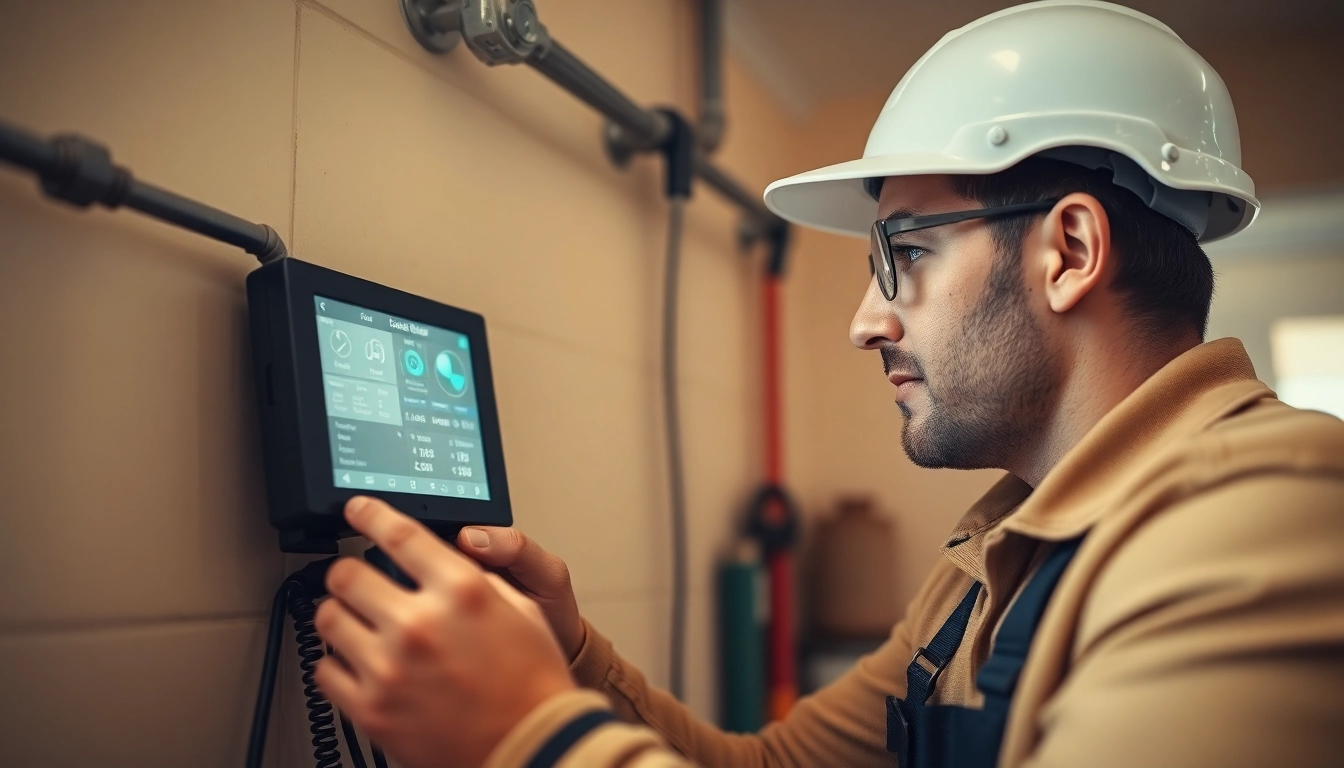Understanding Plumbing Leak Detection
What is Plumbing Leak Detection?
Plumbing leak detection is a critical process used to identify the presence of leaks within plumbing systems, which may be concealed or difficult to access. This technique employs sophisticated tools and technology to pinpoint the exact location of leaks, minimizing damage and reducing repair costs. Early detection is crucial as it helps in safeguarding property and preventing escalating repair issues.
The necessity for effective Plumbing Leak Detection arises from the potential hazards associated with undetected leaks, such as structural damage, mold growth, and increased water bills. Understanding the various aspects of leak detection is essential for homeowners and property managers alike.
Common Signs of Water Leaks
Identifying water leaks early can save significant expenses and prevent larger issues. Common signs of water leaks include:
- Unexplained Increase in Water Bill: A sudden spike in your water bill without an increase in usage often indicates a leak somewhere in your plumbing system.
- Water Stains: Brown or dark spots on walls, ceilings, or floors can signal leaks behind the surfaces.
- Mold and Mildew: The presence of mold or mildew suggests that moisture is accumulating, a likely sign of leaks.
- Sound of Running Water: Hearing water running when fixtures aren’t in use may indicate a leaking pipe.
- Wet Spots on the Floor: Puddles of water or continuously wet areas may signal a leak in the flooring or foundation.
Consequences of Ignoring Leaks
Ignoring plumbing leaks can lead to serious consequences, including:
- Structural Damage: Water can weaken structural components, leading to expensive repairs.
- Mold Growth: Mold thrives in damp environments, causing health concerns and further damage.
- Increased Utility Bills: Leaks result in unnecessary water usage, reflected in higher utility bills.
- Property Value Decline: Persistent leaks can lead to decreased property values due to extensive damage.
- Sewer Problems: Leaks in sewer lines can lead to overflows and contamination.
Technologies Used in Plumbing Leak Detection
Modern Tools and Equipment
The plumbing industry has evolved significantly, adopting several modern tools and technologies for leak detection, including:
- Acoustic Sensors: These detect sounds associated with leaking water and help pinpoint the location.
- Thermal Imaging Cameras: These cameras visualize temperature differences in walls and ceilings, revealing potential leak areas.
- Moisture Meters: Tools that measure moisture levels in building materials, identifying hidden leaks.
- Video Inspection Cameras: These provide a visual assessment of pipes and can help locate leaks without invasive procedures.
Non-Invasive Techniques Explained
Non-invasive leak detection methods minimize disruption and are preferred for their efficiency. Techniques include:
- Infrared Thermography: Uses thermal imaging to detect hot and cold water leaks.
- Elastic Wave Technology: Utilizes electromagnetic waves to detect leaks in a non-intrusive manner.
- Tracer Gas Detection: Involves inserting a harmless gas into the plumbing system and detecting its presence outside.
Advantages of Technology in Leak Detection
Utilizing advanced technology for plumbing leak detection has several advantages:
- Accuracy: Modern tools provide precise location tracking for leaks, reducing repair time and costs.
- Speed: Quick identification means faster resolution of issues, limiting property damage.
- Cost-Effectiveness: Early detection through technology helps avoid severe damage, saving money in the long run.
- Less Disruption: Non-invasive methods minimize damage to walls and floors during inspections.
Best Practices for Plumbing Leak Detection
Regular Maintenance Tips
Implementing regular maintenance practices can significantly reduce the risk of leaks. Some tips include:
- Routine Inspections: Regularly inspect pipes, fittings, and connections for signs of wear or corrosion.
- Monitoring Water Bills: Keep track of usage patterns to detect any unexpected increases promptly.
- Check Basements and Crawl Spaces: Regularly assess these areas for dampness or water accumulation.
- Maintain Gutters and Downspouts: Ensure they are free from debris to prevent water and pressure buildup in plumbing systems.
DIY Detection Methods
Homeowners can perform simple DIY methods to detect leaks before calling a professional:
- Water Meter Test: Turn off all water fixtures and assess the water meter for any moves.
- Food Coloring Test: Placing food coloring in toilet tanks can reveal leaks in the toilet mechanism.
- Visual Inspections: Regularly check visible pipes for signs of condensation, rust, or water pooling.
- Listen for Sounds: Pay attention to hissing or dripping sounds when water isn’t in use.
When to Call a Professional
Recognizing the right time to involve professionals can prevent further damage. Consider consulting a plumber when:
- Signs of a significant leak are present, such as structural damage or mold growth.
- DIY methods fail to identify the source of the problem.
- You suspect a leak in underground pipes.
- The water bill continues to rise despite no change in water usage.
Cost Considerations for Plumbing Leak Detection
Estimating Leak Detection Costs
The cost of plumbing leak detection can vary based on techniques utilized and the complexity of the situation. Typical costs range from $100 to $400, depending on:
- Type of equipment used for detection.
- Size and accessibility of the plumbing system.
- Time required for diagnosis.
Factors Influencing Pricing
Several factors can affect the overall pricing of plumbing leak detection services:
- Location: Costs may differ based on geographic location and local market rates.
- Type of Leak: Some leaks are more challenging to locate and may incur higher diagnostic fees.
- Urgency: Emergency services typically come with premium costs.
Long-Term Savings from Early Detection
Investing in timely plumbing leak detection can lead to substantial long-term savings:
- Minimizing water wastage preserves resources and reduces utility bills.
- Preventing major structural damage can save thousands in repairs.
- Addressing leaks early avoids health risks associated with mold and mildew.
Implementing Plumbing Leak Detection in Your Home
Steps to Begin Your Leak Detection Journey
Taking proactive steps to implement plumbing leak detection can safeguard your home. Consider the following:
- Conduct a comprehensive assessment of your plumbing system to identify potential risks.
- Invest in leak detection technology, such as sensors and monitoring devices.
- Establish a regular maintenance schedule for inspections and repairs.
Monitoring Systems for Continuous Protection
Incorporating monitoring systems provides continuous surveillance against leaks. Key features include:
- Real-time alerts for unusual water flow or moisture levels.
- Integration with smart home systems for automated response.
- Data logging for tracking water usage patterns over time.
Evaluating Your Home’s Plumbing Needs
Assessing your home’s specific plumbing needs is essential for effective leak detection:
- Identify older pipes and potential weak spots that might require extra attention.
- Consider the impact of location and weather on your plumbing system.
- Evaluate historical data regarding previous leaks or plumbing issues.



